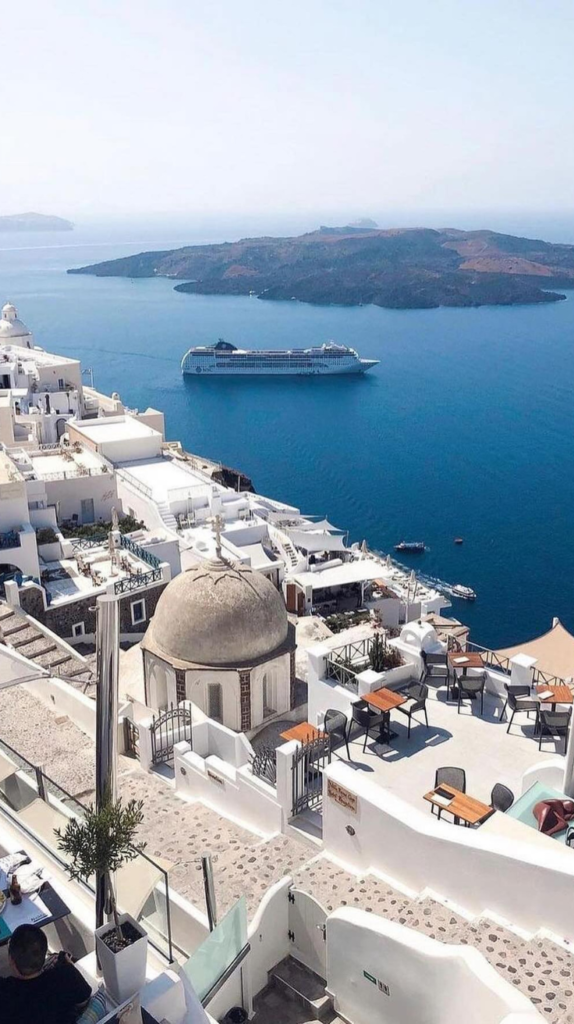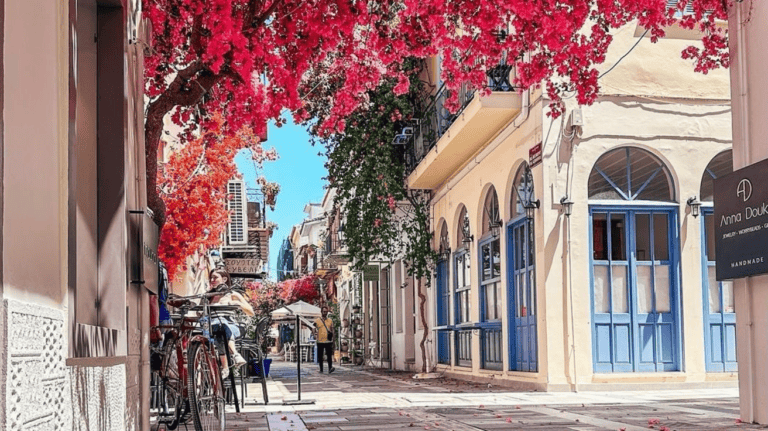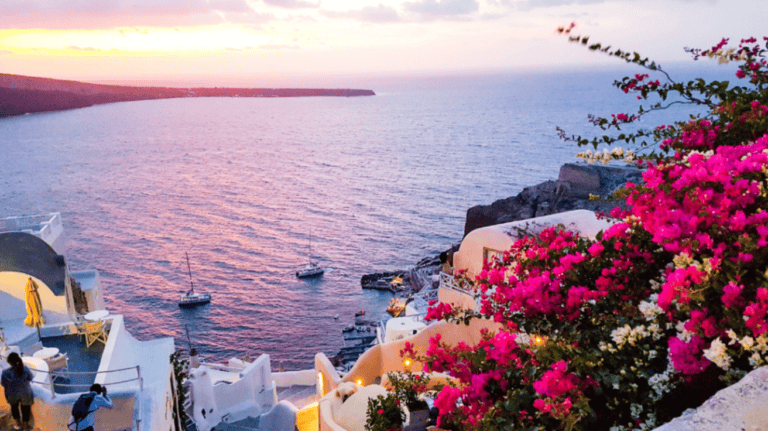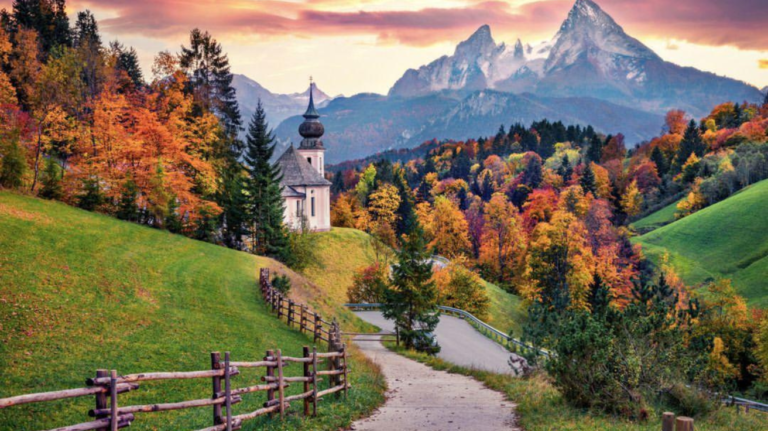What is the Best Time to Visit Santorini to Avoid Crowds, Enjoy the weather, Events and Festivals
Santorini, a gem of the Aegean Sea, is known for its white-washed houses, blue-domed churches, volcanic beaches, and stunning sunsets. With such an enticing landscape, it’s no wonder the island ranks among the top tourist destinations globally. Yet, for prospective visitors, an important question arises: when is the best time to visit Santorini?
The island’s beauty is not bound to any specific time of year, but its character changes significantly with the seasons. Understanding these seasonal variations will help you decide the ideal time for your visit, depending on your preferences for weather, activities, and budget.
In this blog, we’ll explore Santorini’s climate, atmosphere, and tourist activity across the seasons: spring, summer, autumn, and winter. By the end, you’ll be equipped with all the information necessary to determine when to make your Santorini dream a reality.
Spring (March-May)
Spring is considered one of the best times to visit Santorini, especially if you’re seeking a quieter experience before the summer tourist rush begins.

1. Weather
Spring in Santorini offers a comfortable climate, with temperatures ranging from 15°C (59°F) to 25°C (77°F) by May. The island slowly awakens from its winter slumber, and the air feels fresh and invigorating. March can still feel a bit chilly, especially in the evenings, but by April and May, the island starts warming up. Rainfall decreases significantly as the season progresses.
2. Crowds and Atmosphere
March is relatively calm and quiet, with few tourists. By late April and early May, the island starts to see an increase in visitors, but it’s far from the crowds that summer brings. Spring is perfect for those who want to enjoy Santorini’s beauty without navigating large groups of people. The island’s businesses and tourist services, which tend to shut down over winter, begin reopening in April, so you’ll find most restaurants and attractions operational.
3. Activities
Spring is ideal for outdoor activities. The cooler temperatures make it perfect for hiking, especially the famous Fira to Oia route, which offers spectacular views of the caldera. Exploring the archaeological sites, like Ancient Thera and Akrotiri, is also more comfortable without the intense summer heat.
The island’s nature is in full bloom during spring, offering vibrant landscapes covered with wildflowers. Photographers will find this a prime time to capture Santorini’s scenic charm.
Though swimming might be too cold for some in March and early April, by May, the sea becomes more inviting, especially for those who don’t mind slightly cooler waters.
4. Events and Festivals
One of the highlights of visiting Santorini in spring is Easter. Greek Orthodox Easter is a major celebration in Santorini, marked by processions, feasts, and fireworks, especially in the town of Pyrgos. Even if you’re not religious, experiencing Greek Easter is a cultural treat. Late spring is also when some local wine festivals start, offering visitors the chance to enjoy the island’s famous wines, such as Assyrtiko.
Pros of Visiting in Spring:
- Milder weather, perfect for exploring.
- Fewer crowds, especially in early spring.
- Lush landscapes and blooming flowers.
- Easter festivities.
Cons:
- The sea might still be a bit chilly for swimming in early spring.
- Some tourist services may still be closed in March.
Summer (June – August)
Summer is undoubtedly the high season in Santorini. If you’re dreaming of warm days by the beach, lively nightlife, and bustling streets, then summer is your season.

1. Weather
Expect hot, dry days with temperatures between 25°C (77°F) to 35°C (95°F) or more. July and August are the hottest months, with almost no rain. The evenings provide a welcome relief, with slightly cooler temperatures, but you’ll still need light clothing. The Aegean breeze, especially in higher elevations like Oia, offers a bit of respite from the heat.
2. Crowds and Atmosphere
Santorini in summer is packed. This is when most tourists, particularly from Europe, flock to the island. The caldera views, famous sunsets, and top attractions like Oia are crowded with people trying to get the perfect photo. If you enjoy a vibrant atmosphere, lively restaurants, and busy nightlife, summer is for you. But if you’re looking for a more peaceful experience, it might feel overwhelming.
The island’s accommodations and restaurants are fully booked during the summer months, and prices are at their peak. It’s essential to book well in advance if you’re planning a summer trip.
3. Activities
While summer might be too hot for long hikes, the season is perfect for beach lovers. Santorini’s unique beaches, such as the Red Beach, Kamari Beach, and Perissa Beach, are at their best during these months. Watersports like snorkeling, diving, and sailing are very popular.
One of the highlights of summer is taking a boat tour around the caldera, which includes visiting the volcanic island of Nea Kameni and swimming in the hot springs. The stunning sunset cruises, where you can watch the famous Oia sunset from the water, are especially popular in summer.
Summer is also festival season, with the Santorini Jazz Festival in July and various cultural events taking place throughout the season. It’s the liveliest time of year, with something happening at every corner.
4. Events and Festivals
The “Ifestia Festival,” held in late August, is a spectacular event that reenacts the volcanic eruption with fireworks over the caldera. It’s a unique experience that draws many visitors.
Pros of Visiting in Summer:
- Ideal beach weather and water temperatures.
- Lively atmosphere with plenty of activities.
- Full range of services and accommodations.
- Many cultural festivals and events.
Cons:
- Intense heat, especially for sightseeing and hiking.
- Overcrowded tourist spots.
- Higher prices for accommodations and services.
Autumn (September – November)
If you’re after the summer warmth but want to avoid the crowds, autumn is the perfect time to visit Santorini. The temperatures are still pleasant, the sea remains warm, and the island starts to slow down.

1. Weather
September offers warm weather similar to the summer, with temperatures between 24°C (75°F) and 30°C (86°F), but the heat is more bearable. October and November are cooler, with temperatures averaging between 17°C (63°F) and 23°C (73°F). Rain starts to become more frequent in late October and November, but there are still plenty of sunny days.
The sea remains warm well into October, making autumn a great time for swimming and beach activities without the intense summer sun.
2. Crowds and Atmosphere
September is still quite busy, though not as hectic as July and August. By October, the crowds significantly decrease, offering a more relaxed experience, though you’ll still encounter other tourists at the popular spots. November feels much quieter, as the island prepares for winter, and some businesses begin closing for the season.
Autumn is perfect for couples and solo travelers who want a more tranquil experience, but still want to enjoy warm weather and the beauty of Santorini without the summertime rush.
3. Activities
Autumn is a great season for hiking, as the cooler temperatures make it more comfortable for outdoor exploration. You can also enjoy wine tours, as it’s harvest season in September. The wineries are active, and you can taste freshly made local wines. Visiting the villages, taking part in cooking classes, and strolling through the less crowded streets of Fira and Oia are all lovely autumn activities.
For beachgoers, September is perfect, and October is still warm enough for sunbathing and swimming.
4. Events and Festivals
The International Music Festival in early September is a major cultural event, drawing both international and local artists. Additionally, harvest-related celebrations and wine festivals are popular in September.
Pros of Visiting in Autumn:
- Warm weather without the summer heat.
- Fewer crowds than in the high season.
- The sea remains warm for swimming.
- Harvest season for wine lovers.
Cons:
- Cooler and possibly rainy weather in late October and November.
- Some businesses start to close towards the end of the season.
Winter (December – February)
Winter in Santorini offers a completely different experience. It’s the quietest time of year, and many of the tourist facilities are closed, but for those seeking tranquility and unique experiences, winter might be appealing.

1. Weather
Winter temperatures range from 10°C (50°F) to 15°C (59°F). It’s the rainiest season, though rainstorms tend to be brief. You can expect overcast days and occasional chilly winds, particularly in January and February. Snow is rare, though it can occur on the higher parts of the island.
While it’s not beach weather, winter in Santorini is still mild compared to many parts of Europe.
2. Crowds and Atmosphere
Santorini in winter is peaceful and almost feels like a different place compared to the summer. There are no crowds, and you might have the famous caldera views and scenic spots all to yourself. However, the island takes on a more local feel, as most international tourists are absent, and many of the hotels and restaurants catering to them are closed. It’s a great time to get an authentic sense of life on the island.
3. Activities
Hiking is still possible in winter, though you’ll need to be prepared for rain and mud on some trails. Visiting the archaeological sites is easier without the summer heat and crowds. Though swimming is off the table for most, you can still enjoy a boat tour around the caldera or visit the island’s museums.
Winter is also a good time to take day trips to other nearby islands, as ferry services continue, albeit less frequently.
4. Events and Festivals
Winter in Greece means Christmas and New Year celebrations. While Santorini is not a top destination for winter festivities, some local traditions and smaller events are held in December and January. For those interested in authentic Greek culture, the Feast of the Epiphany (January 6) is celebrated with traditional blessings of the waters.
Pros of Visiting in Winter:
- Total peace and quiet with no tourist crowds.
- Lower prices for accommodations and services.
- Mild winter climate compared to other European destinations.
Cons:
- Many tourist businesses and services are closed.
- Cooler temperatures and possible rainstorms.
- Limited activities compared to the other seasons.
Conclusion
So, when is the best time to visit Santorini? It really depends on what you’re looking for.
- For perfect weather and fewer crowds, consider visiting in spring (April-May) or autumn (September-October). These months offer the best balance between pleasant temperatures, available activities, and manageable tourist levels.
- For beach lovers and those who want a lively atmosphere, summer (June-August) is the time to go, but be prepared for crowds and higher prices.
- For a quiet, off-the-beaten-path experience, winter (December-February) provides a peaceful retreat, although with fewer amenities and cooler weather.
Each season in Santorini offers something unique, and no matter when you choose to visit, the island’s magic will always be there to greet you.






